While Hanoi is renowned for its famous pho, Saigon takes pride in a dish with a unique and distinctive flavor: Broken Rice, known as “Cơm tấm” in Vietnamese. For a long time, Broken Rice has become a symbol of culinary crossroads between East and West. People use a spoon and fork to eat it instead of chopsticks, which are more common for regular rice dishes.
The accompanying dishes include French-style grilled pork ribs, Chinese-style shredded pork skin, Northern-style pork and shrimp paste sauce, and Southern-style sweet and sour fish sauce. This magical combination makes Broken Rice even more exquisite.
The History of Broken Rice:
This dish originated in the early 1970s, starting at Thuan Kieu Broken Rice restaurant in District 11. After 1975, due to the increasing demand for food, Thuan Kieu Broken Rice, instead of only serving breakfast, started offering it for both lunch and dinner. Later on, more Broken Rice restaurants opened throughout the city.
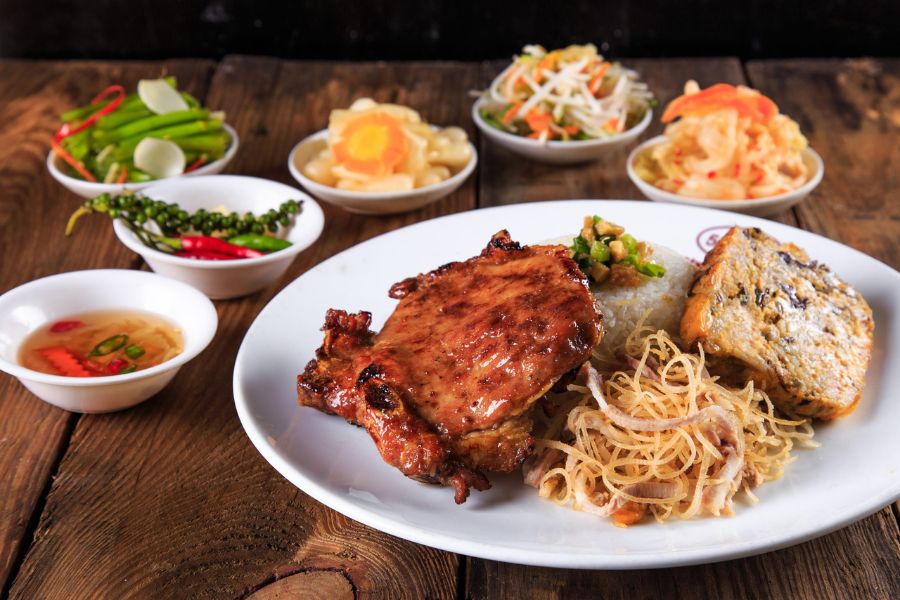
In the past, Broken Rice was a common meal for laborers and poor students. It was called “Broken Rice” because it was made using broken rice grains or damaged rice, which were cheaper and more cost-effective.
The best Broken Rice is cooked in a cast iron or clay pot over a wood fire. Nowadays, many restaurants use the steam method to save time.
Traditional Accompaniments for Broken Rice:
When enjoying Broken Rice, the classic and most delicious combination consists of “ribs – shredded pork skin – pork and shrimp paste,” including grilled pork ribs, shredded pork skin, and steamed pork and shrimp paste. Pickled vegetables, a dish of rich and tangy fish sauce with minced garlic and chili, complete the meal.
Besides the main trio of ribs, skin, and paste, Broken Rice can also be served with sunny-side-up eggs, caramelized fish, braised shrimp, grilled chicken, Chinese-style braised pork, stuffed squid… Each side dish has its unique flavor, making the meal equally enticing.
Broken Rice with Grilled Pork Ribs:
The most prized part of Broken Rice is the grilled pork rib. It’s considered the “secret recipe” of Saigon’s Broken Rice sellers. The pork ribs are marinated with a variety of spices to make them tender, fragrant, and succulent, with a sweet and savory taste.
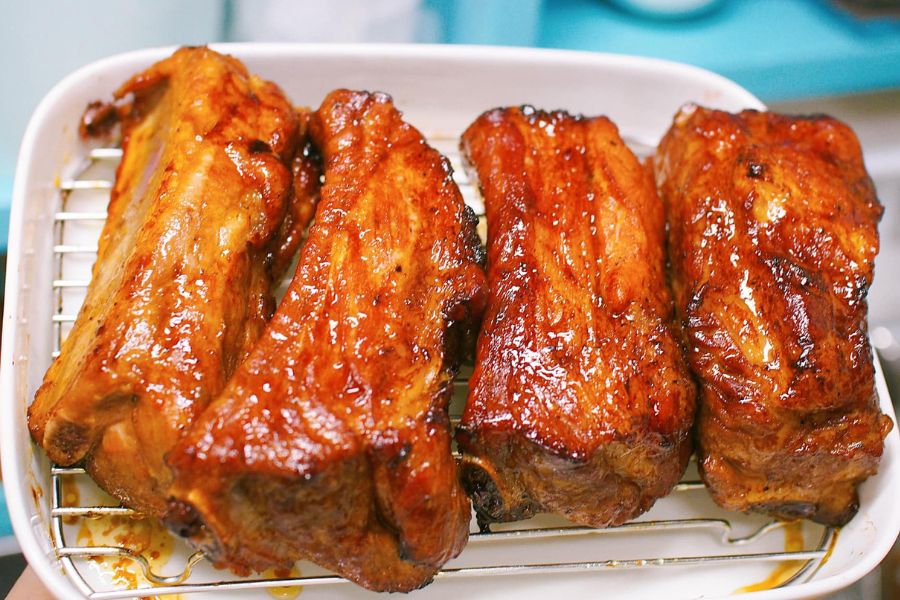
After grilling over red-hot charcoal, the ribs absorb the flavors, become crispy outside and tender inside, and develop the distinctive aroma that instantly reminds you of “Broken Rice.”
Broken Rice with Pork and Shrimp Paste:
Pork and shrimp paste is a combination of finely ground pork, mung bean vermicelli, shiitake mushrooms, wood ear mushrooms, scallions, and various seasonings. The paste is steamed and cut into rectangular or small round pieces.
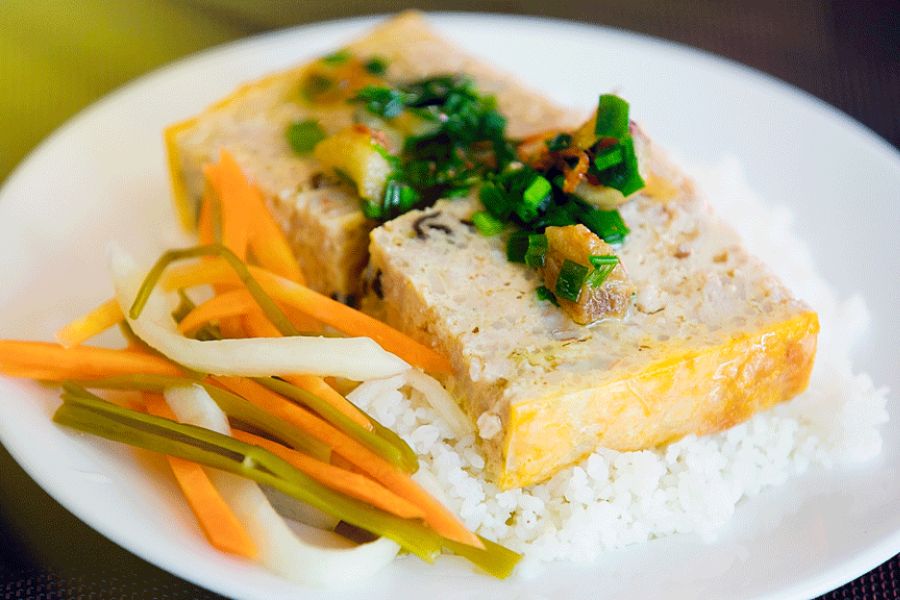
Notably, a layer of egg yolk is spread over the surface of the paste, not only enhancing its appearance but also adding richness, aroma, and tenderness. Preparing good pork and shrimp paste requires great skill.
Broken Rice with Shredded Pork Skin:
When paired with ribs and paste, shredded pork skin is an essential element. It’s made from clean pork skin, boiled until tender, thinly sliced, squeezed to remove excess water, and then mixed with roasted rice powder and various seasonings. Chewing a piece of shredded pork skin gives you a delightful crunch and a pleasant chewiness, perfectly satisfying your taste buds.
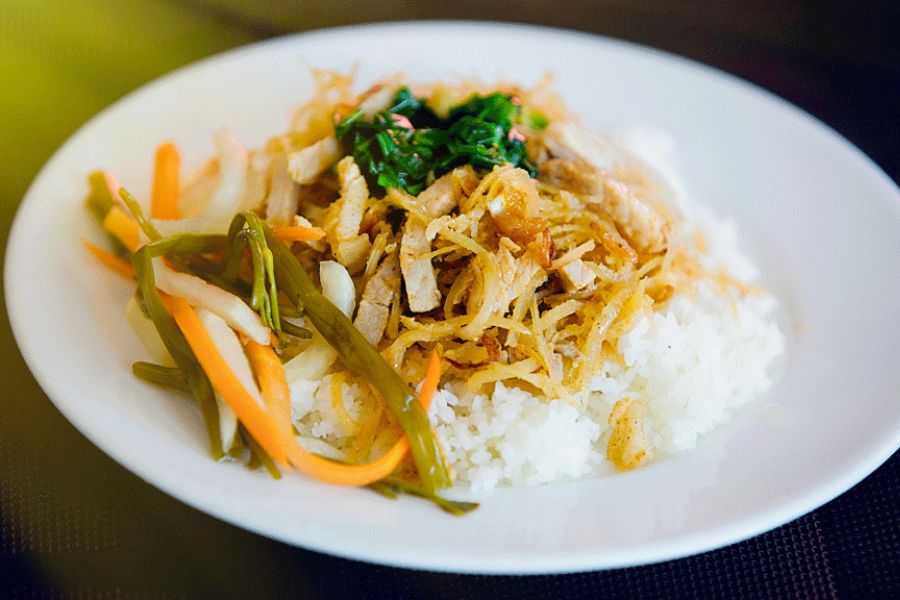
Served with pickled vegetables including daikon, carrots, cucumber, and tomato, Broken Rice creates a unique experience that food enthusiasts must try. Whether you visit a local street vendor or a high-end restaurant in the “young city,” you should definitely “indulge in Broken Rice on the sidewalk” to fully savor the distinctive flavor of this dish.
It’s the gentle aroma of rice blending with the fragrance of scallion-infused lard. It’s the sight of charcoal smoke and the tantalizing smell of grilled pork ribs wafting through every corner of the streets and alleys. Over time, this aroma and taste have penetrated deep into the subconscious and daily life of Saigon’s residents, awakening the senses of anyone who happens to pass by a Broken Rice vendor.
Where to eat com tam?
Com tam is a dish that people in Saigon take pride in. It embodies the quintessential street food spirit of Vietnamese cuisine by delivering an explosion of flavors. Make sure to add com tam to your must-try list when visiting Vietnam, and we guarantee you won’t regret it.
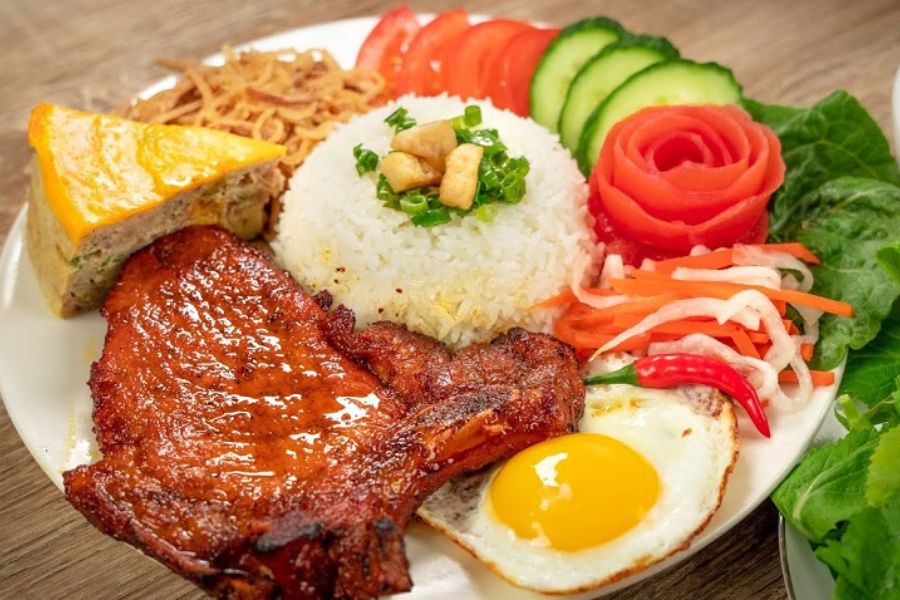
Ho Chi Minh City
- Com Tam Bui Saigon
Address: 100 Thach Thi Thanh, District 1
Price: 45,000 VND – 65,000 VND ($2 – $3)
- Com Tam Moc
Address: 85 Ly Tu Trong, District 1
Price: 45,000 VND – 74,000 VND
- Quan Chay 103 (vegetarian)
Address: 103 Nguyen Thai Binh, District 1
Price: 40,000 VND
Hanoi
- Thuy Linh Chau
Address: 53 Trang Thi, Hoan Kiem District
Price: 60,000 VND
- Com Tam Quan 1
Address: 178 Hang Bong, Hoan Kiem District
Price: 60,000 VND – 85,000 VND
